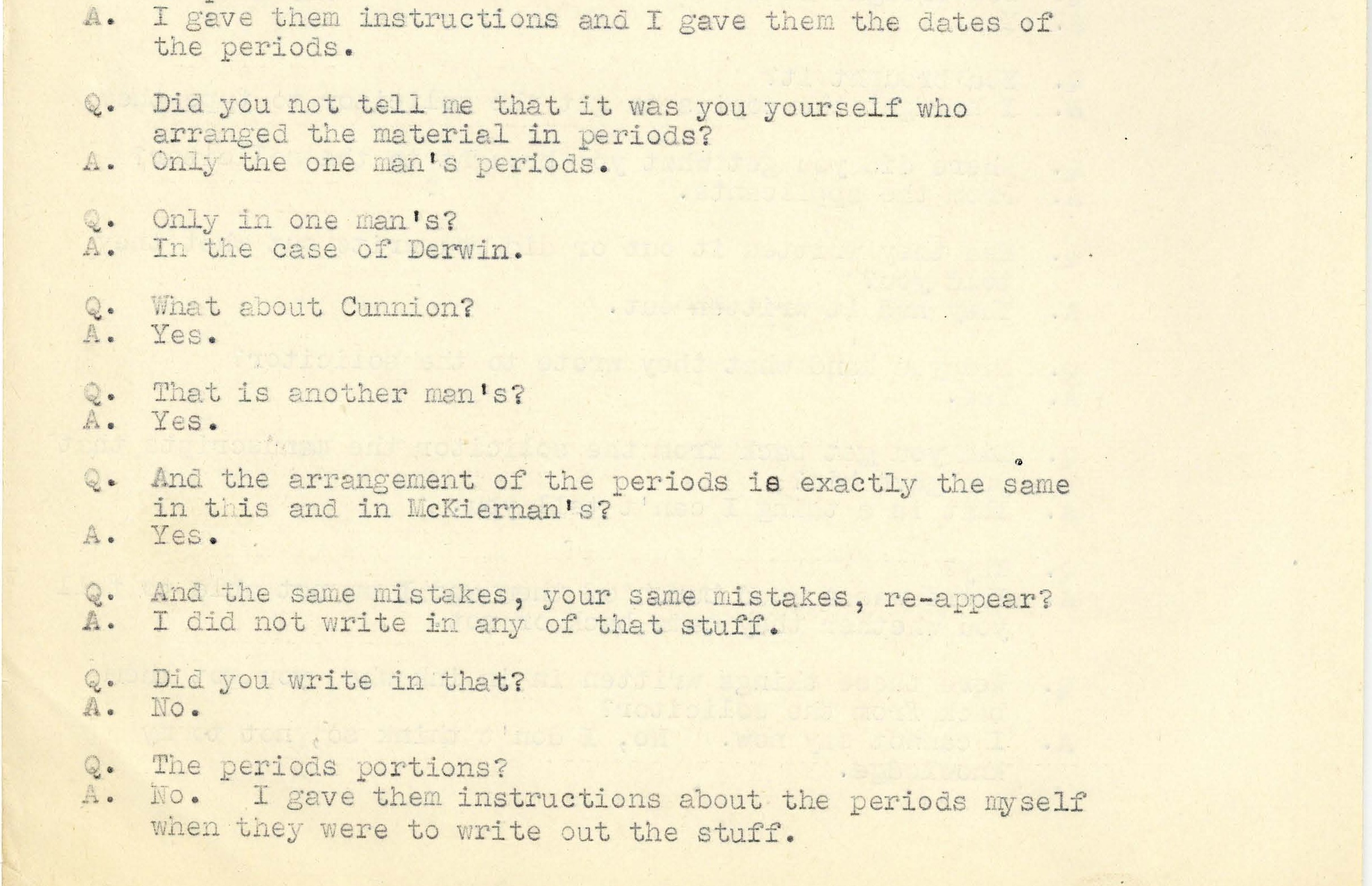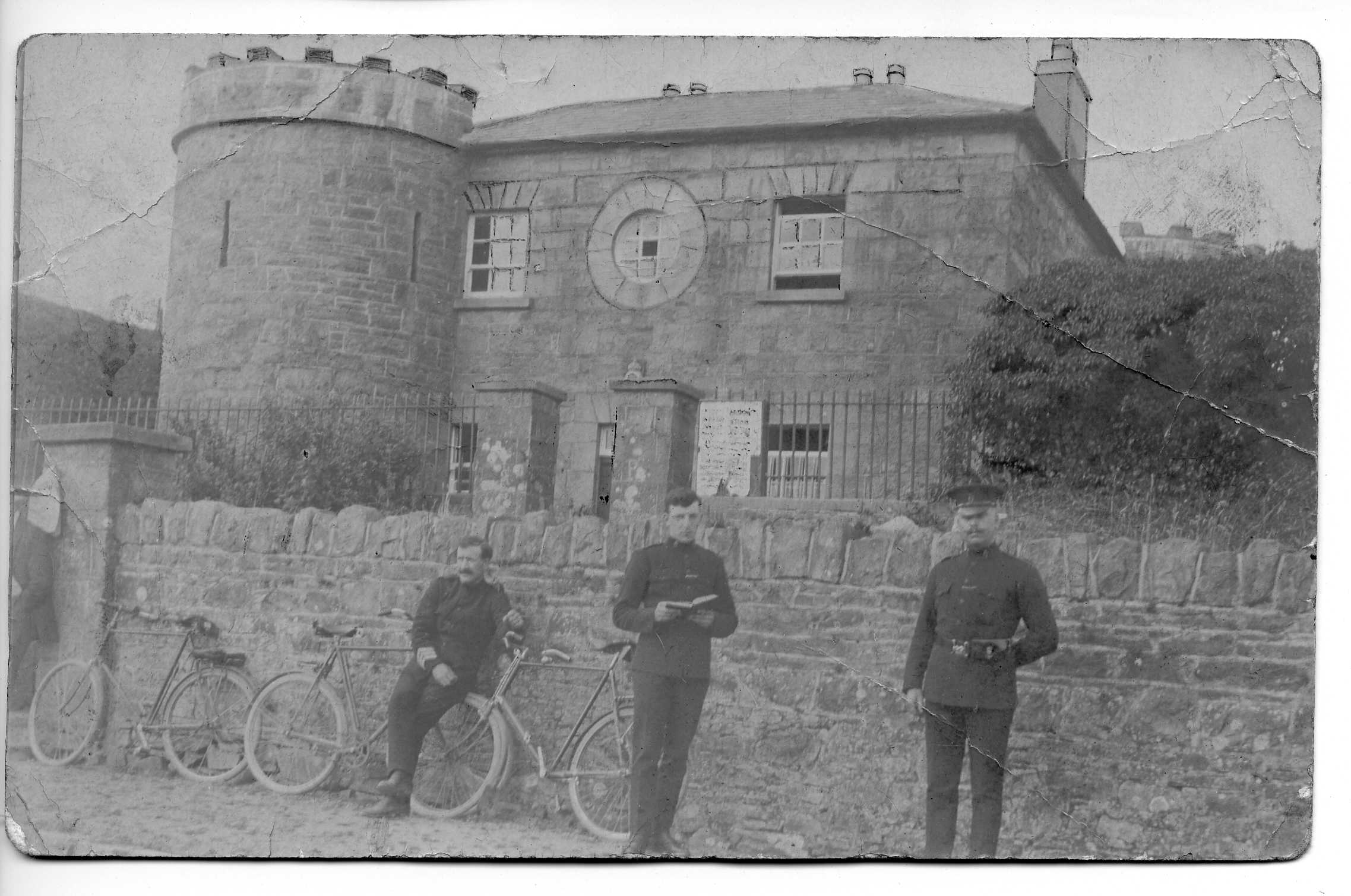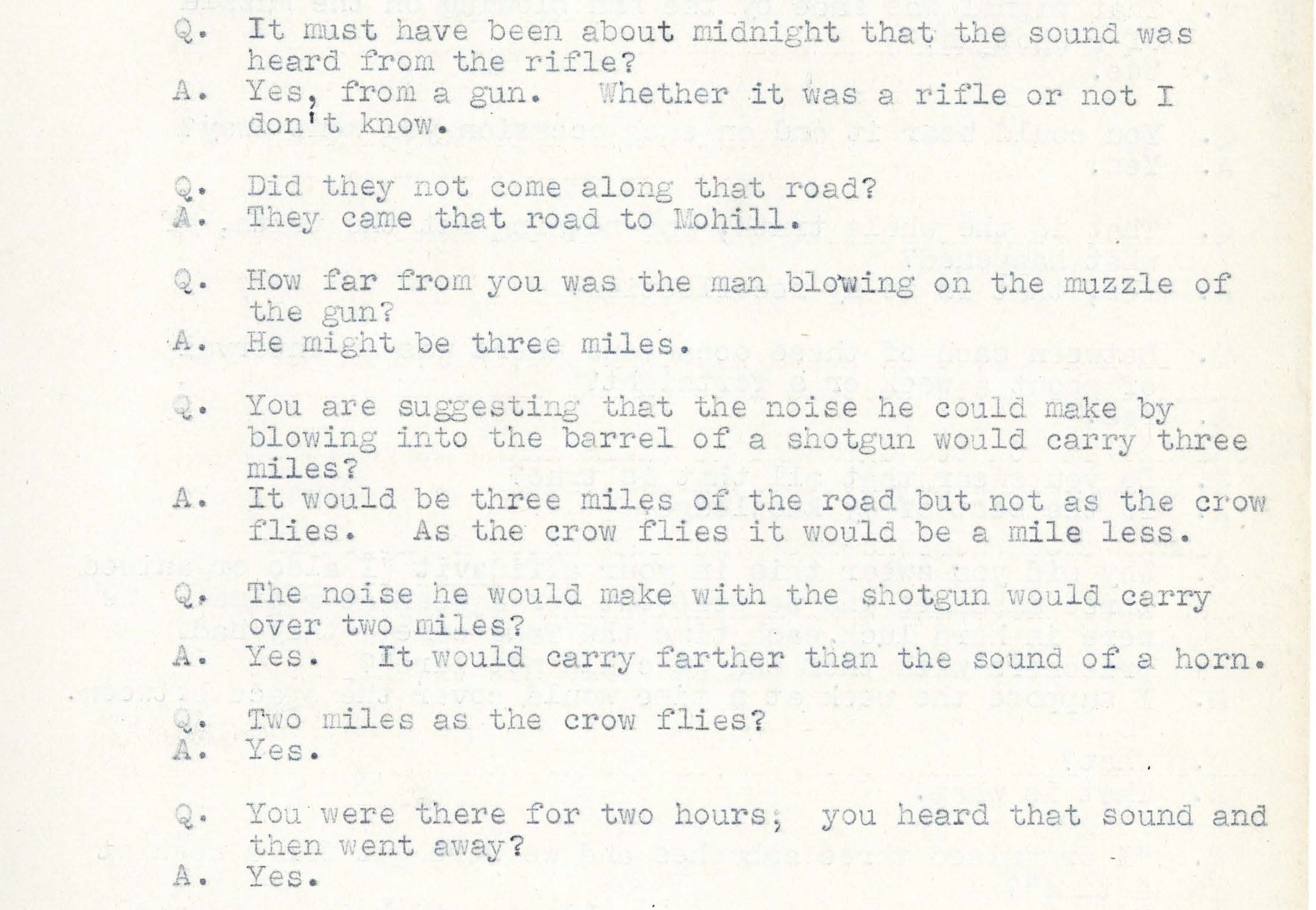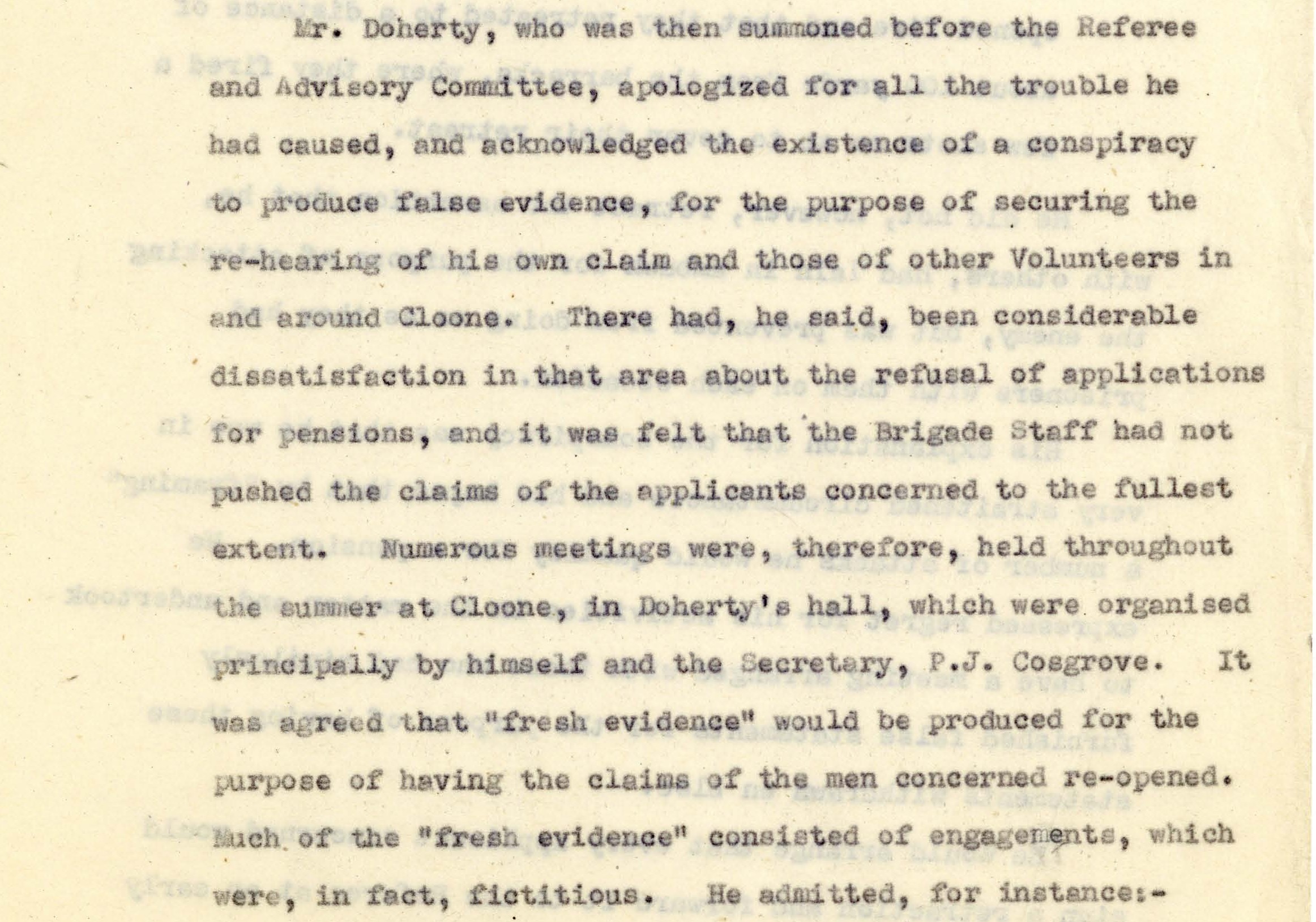‘Pensions for nothing?’—the case of Patrick James Doherty
Published in Features, Issue 4 (July/August 2020), Volume 28While some applicants may have exaggerated their service, a system of checks and balances allowed statements to be verified and tested.
BY ROBERT MCEVOY
‘Doherty: If I could get a few shillings … a pension …
Referee: The only thing that might happen to you is to be prosecuted for having sent in a false affidavit … At the heel of all this you turn around and talk about getting a few shillings?’

Above: Extract from MSP34REF39470 regarding the similarity of applications received.
So concludes the extraordinary exchange between the referee and advisory committee and Patrick James Doherty (MSP34REF39470) of Cloone, Co. Leitrim. The sworn evidence revealed that Doherty and, to an extent, Patrick Cosgrove (MSP34REF40751) had colluded to exaggerate their claims and those of applicants in their area to secure military service pensions. The evidence was collected between 5 and 7 December 1944 and runs to 109 pages. The statement is contained within Doherty’s pension application in the Military Service (1916–1923) Pensions Collection (MSPC) and came to light during processing of the Brigade Activity Reports (BAR) series. Doherty had embellished his own activities after his initial application had been rejected. Two other applicants in particular were identified as potential beneficiaries of the collusion: John Derwin (MSP34REF29562) and James Cunnion (MSP34REF39301), both of whom were members of Cloone Company, Leitrim Brigade, in which Doherty held the rank of battalion vice-officer commanding. All four men had their claims rejected. As part of the appeals process they sought to submit further supporting evidence to the minister in the form of affidavits. Both Derwin and Cunnion claimed that additional activities were added to their statements before they were submitted to the pension authorities. Derwin also stated that he did not swear his affidavit, nor were there any witnesses to its signing. Both swearing an oath and signing the affidavit in the presence of a commissioner for oaths were important parts of the submission process.
The evidence

Above: Ballinamuck RIC barracks, Co. Longford—one of those that Doherty claimed to have attacked. (BMH)
The evidence in question centred on multiple incidents and the parts, if any, played by Doherty, Derwin and Cunnion.
- The most contested incident related to a raid for mails between Mohill and Cloone in March/April 1921 in which, it was alleged, an exchange of fire took place and one member of the RIC was wounded. The RIC rifles and the mails were captured.
- As part of the Belfast boycott, a raid on a bread van guarded by two members of the RIC allegedly led to an exchange of fire. One member of the RIC was wounded and both had their rifles taken.
- Conflicting evidence in the case of Derwin concerns the driving of cattle/goats off the land of individuals who were supplying milk to members of the RIC. Derwin denied taking part in this activity.
- Contradictory evidence concerning the amount of time spent in training camp. Derwin states that he spent one week in camp yet his affidavit claims that he spent three weeks.
- Other conflicting evidence concerns the capture of Drumshambo and Drumsna in the Civil War. Both Cunnion and Derwin deny any part in this activity.
- Alleged attack/capture of a lorry of soldiers at Cloone in the Civil War. Again Cunnion denies taking part in this operation.
- Doherty’s claim that he was fired on by the RIC while capturing dog licences from a court clerk (March 1921).
- Doherty’s alleged lying in ambush for two–three days at ‘John Joe Lyons’ Crossroads’.
- Doherty’s supposed part in two–three planned ambushes on patrols between Cloone and Aughavass, which had to be abandoned owing to the presence of prisoners (October/November 1920).
- A quantity of ‘Black and Tan’ uniforms acquired for the purpose of gathering information from the enemy. Doherty claims that he and six other men dressed in uniform for this purpose.
- Doherty’s part in the capture of Arva Barracks. Doherty initially swore that he took part in the capture. Under questioning he admitted that ‘I thought … anything you did in connection with the capture … was helping to capture it’. It is revealed that he was ordered to return to his area.
- Doherty’s alleged leading of an attack on Cloone Barracks in July 1920, which led to a 30-minute exchange of fire with six members of the RIC inside. In his previous statement of 5 April 1939 Doherty claimed that the IRA party had to retreat to 100 yards before shots were exchanged: ‘We had not taken up positions and there were four of the police out and we had to retreat under fire’.
Tense exchanges

While some of these incidents may appear relatively minor, Doherty, we must assume, hoped that they would be enough to secure a service pension. His addition of material to the claims of Derwin and Cunnion, while strengthening their individual claims, added credence to his own too. Attention must also be paid to a tense exchange between Doherty and the referee and advisory committee. For example, when discussing the rearranging of material in the affidavits of Derwin and Cunnion, Doherty had initially claimed that it only occurred in the case of Derwin.
During another exchange, Doherty’s reluctance to answer the question was obvious:
‘Q: You said that you read what the applicant sent on and made a copy of it and made a few little changes regarding dates and some engagements?
Doherty: I have a pain in my leg and a touch of neuritis. The doctor is treating me for it at the present time.’
Later, when discussing Doherty’s own application, it becomes clear that the referee is at the point of exasperation:
‘Q: Had you anything more to say at the time about having anything to do with ambushes?
Doherty: I had, but I was confused. I was not able to make a full statement of my evidence for I did not know whether I was in Dublin or at home at the time. A man having a wife and children in poor circumstances and did not know when he would be evicted.
Q: And that made you forget whether you were in ambushes or not?’
The most memorable of the exchanges revolved around a signal to call off a proposed attack on a party of British forces, at the conclusion of which the referee appears almost bemused.
The final example centres on the different statements concerning the attack on Cloone Barracks and the procedure for taking evidence from applicants:
‘Q: There were two different ways of taking your statement. There was an Interviewing Officer taking notes and there was a typist there taking it in shorthand at the same time. There is a double check on it …
Doherty: My statement to my knowledge is the same this day as that day.
Q: To my knowledge it is entirely different and contradictory.
Doherty: It may be in the paper but to my best belief the statement I make today is the statement I made on that date.
Mr Gill: Mr Doherty, people do not write down statements that have not been made … It is here, taken down from you, as you made it. You are only getting yourself deeper and deeper into the wood.
Doherty: I am doing what I thought was justice to myself. I am making the same statement as I ever made.
Mr McCoy: These two people had no interest in not taking down what you said … Why should they come together for the purpose of comparing notes and putting down things that you did not say … It would be ridiculous to think they would possibly do it.
Evidence from Mr Seán O’Farrell states that Doherty and Cosgrove established an independent committee [about eighteen months previously] as “people got dissatisfied with how things were managed … went to Mr Doherty and Mr Cosgrove”. “Mr Doherty was very zealous over the welfare of those who belonged to his Battn. and district; so was Mr Cosgrove.” He also revealed that the independent committee did not submit records to the Brigade Committee. Doherty acted as chairman of the newly formed committee and Cosgrove acted as secretary. Doherty admits under questioning: Q: And you let the Secretary of your organisation send in these affidavits knowing that they were wrong? Is that the position? A: That is the position—it is.’
Doherty’s confession

Above: Extract from A31_3: admission from Doherty that applications contained fictitious evidence.
During his evidence Doherty attempted to place culpability on a Mr Dunleavy, a solicitor in Mohill, who was responsible for typing up the affidavits. Doherty intimates that Dunleavy copied the same statement on three occasions. Following the conclusion of evidence on 7 December 1944, Doherty appeared before the committee at his own request. In a two-page memorandum he ‘acknowledged the existence of a conspiracy to produce false evidence’. Doherty and Cosgrove held numerous meeting in Doherty’s Hall, Cloone, and it was agreed that:
‘Fresh evidence would be produced for the purpose of having the claims of the men concerned re-opened. Much of the fresh evidence consisted of engagements which were, in fact, fictitious.’
It was admitted (1) that there was no truth in the assertion that one RIC man was wounded and two were disarmed on the occasion of a raid on the mails near Cloone; (2) that there was no firing on the occasion of destroying a bread van in connection with the Belfast boycott; (3) that there was no firing in the hold-up of a court clerk; (4) that the number of guns captured in raids was greatly exaggerated; and (5) that the account of an attack on Cloone Barracks was mainly incorrect.
Doherty’s explanation was ‘that he was in very straitened circumstances and had hoped that by “framing” a number of attacks he would qualify for a pension’. The memorandum revealed that Doherty undertook to have a meeting arranged with those who had similarly furnished false statements for the purpose of having these statements withdrawn en bloc. Doherty also stated that he would arrange that all the applicants concerned would sign a retraction and submit it to the referee. Copies of this memorandum appear on the files of at least nine other Leitrim applicants, suggesting that there was a wider conspiracy.
Conclusion
In his final remarks the referee states:
‘We have spent to-day going back with Mr Doherty over a variety of statements that he has made at different times to this Board and I think that I am speaking for the whole Board when I say that he is most unsatisfactory, to put it mildly. It is a most regrettable state of affairs that a development like this should arise.’
The investigation carried out by the referee and advisory committee certainly defies the argument that ‘people got pensions for nothing’. While some applicants may have been prone to exaggerate their service, a significant effort was made by the office of the referee to examine the claims and expose such attempts. Moreover, the size of the Military Service Pensions Collection helped to create a system of checks and balances whereby statements could be verified and tested across a number of file series, including the Brigade Activity Reports.
Robert McEvoy is an archivist with the Military Service (1916–1923) Pensions Collection, Military Archives.
















